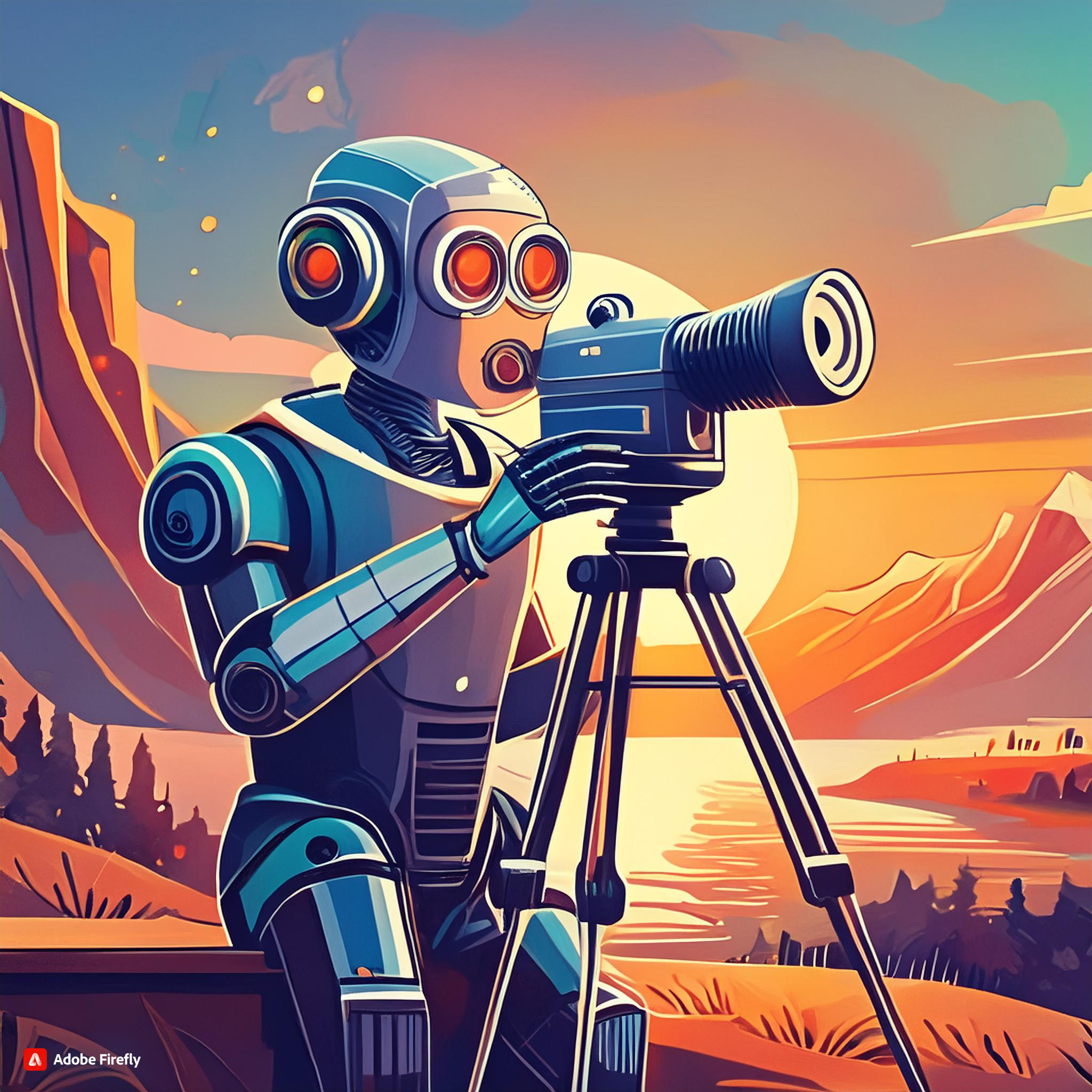
09 Jul The Irreplaceable Human Touch: Why AI Can’t Capture the Magic of Documentary Video for Brand Storytelling
It’s natural to wonder if traditional content creation methods are at risk of obsolescence given the meteoric rise of AI in filmmaking. However, when it comes to documentary filmmaking (video content), particularly for brand storytelling, the human touch remains irreplaceable.
Why?
The Power of Authenticity
It’s obvious right? At its core, documentary video thrives on authenticity. It captures real people, real emotions, and real stories. This authenticity is something that AI, no matter how advanced, struggles to replicate.
- Human Connection: Documentaries often rely on interviews and candid moments. The rapport between a skilled interviewer and subject can elicit genuine emotions and unexpected revelations. AI lacks the empathy and intuition to build this trust and navigate complex human interactions.
- Emotional Nuance: Human filmmakers can pick up on subtle emotional cues – a fleeting expression, a pause in speech, a change in body language. These nuances often tell as much of the story as the words spoken. AI, while improving in emotion recognition, still falls short in interpreting these delicate human moments.
- Cultural Context: Understanding and representing cultural nuances is crucial in brand storytelling. Human documentarians bring their lived experiences and cultural knowledge to their work, ensuring sensitivity and accuracy that AI can’t match.
The Authenticity Gap: Real Video Capture vs. Generative AI
While generative AI has made impressive strides in creating realistic-looking video content, it still falls short when compared to genuine video capture, especially in the context of documentary filmmaking for brands.
- Capturing Real-World Imperfections
Real video capture embraces the beautiful imperfections of our world. The slight tremor in someone’s voice as they share a personal story, the unexpected gust of wind that ruffles hair during an outdoor interview, or the genuine laughter that erupts from an unscripted moment – these elements can’t be authentically replicated by AI… yet.
These imperfections add depth and relatability to brand stories. They remind viewers that behind every brand are real people with real experiences, fostering a sense of connection that polished, AI-generated content often lacks.
- Showcasing Genuine Product Interactions
For brands showcasing products or services, real video capture is unparalleled. It allows for authentic demonstrations of how products work in real-world scenarios. The natural way a person interacts with a product, their genuine reactions, and even the ambient sounds of the environment all contribute to a more convincing and trustworthy presentation.
- Capturing Spontaneous Moments
Some of the most powerful moments in documentaries are unplanned. A customer’s eyes lighting up as they describe how a product changed their life, or an employee’s passionate gesticulation as they explain their role in the company – these spontaneous, human moments are what make brand stories memorable. AI, no matter how sophisticated, cannot replicate the magic of these unscripted instances.
- Environmental Authenticity
Real video capture allows brands to showcase their actual locations, whether it’s their manufacturing facilities, offices, or the communities they serve. This transparency builds trust and gives viewers a genuine sense of the brand’s world. While AI can generate impressive digital environments, it can’t capture the unique atmosphere and details of real locations.
- Emotional Resonance
There’s an intangible quality to real human emotion that even the most advanced AI struggles to replicate convincingly. The subtle micro-expressions, the tone of voice, and the body language of real people telling real stories create an emotional resonance that viewers can instinctively feel. This emotional connection is crucial for brand storytelling, as it’s often what viewers remember long after the specifics of the content have faded.
- Ethical Considerations and Viewer Trust
In an era of deepfakes and concerns about digital manipulation, using real video footage can be a powerful statement of authenticity for brands. Viewers are becoming increasingly savvy and skeptical of digital content. Knowing that they’re watching real people and real events can significantly increase trust in the brand and its message.
- Collaborative Creativity
Real video production is a collaborative process involving the brand, the subjects, and the production team. This collaboration often leads to unexpected insights and creative directions that AI, working from predefined parameters, cannot replicate. The human-to-human interaction during the production process can uncover stories and angles that make the final product richer and more nuanced.
While generative AI video has its place in content creation, particularly for certain types of animations, visualizations, or stock style B-roll, it cannot replace the authenticity, emotional depth, and trustworthiness of real video capture in documentary-style brand content.
As AI-generated content becomes more prevalent, the value of genuine, human-created video content is likely to increase, offering brands a way to stand out with authentic, relatable stories in an increasingly digital world.
What are some other considerations for how Docu storytelling will be difficult for AI?
The Art of Real
Documentary filmmaking is as much an art as it is a technical skill. The creative decisions made throughout the process are what transform raw footage into a compelling narrative.
- Narrative Structure: Crafting a compelling story arc requires creative judgment. Deciding what to include, what to leave out, and how to order events for maximum impact is a nuanced process that AI can’t replicate.
- Visual Aesthetics: The choices in framing, lighting, and composition all contribute to the mood and message of a documentary. These artistic decisions stem from human creativity and intuition.
- Music and Sound Design: The right music or sound effect can elevate a scene from informative to emotionally powerful. This requires an understanding of human emotional responses that AI currently lacks.
These three points all have to work together AND smell real in an imperfect sort of way.
Adaptability and Problem-Solving
Documentary filming often involves unexpected challenges and opportunities. The ability to think on one’s feet and adapt to changing circumstances is crucial.
- On-the-Spot Decision Making: From dealing with uncooperative weather to seizing unexpected filming opportunities, human filmmakers can make split-second decisions that can make or break a project.
- Creative Problem-Solving: When things don’t go as planned, human creativity shines. Finding alternative ways to tell a story or work around limitations is a uniquely human skill.
- Reading the Room: Knowing when to push for more information and when to back off, when to let a moment breathe, and when to intervene – these are instinctual decisions that come from experience and emotional intelligence.
Ethical Considerations
Documentary filmmaking, especially for brand content, often involves navigating complex ethical terrain.
- Informed Consent: Ensuring all participants fully understand how their image and words will be used is a critical ethical consideration. This often requires nuanced communication that AI cannot provide.
- Representation and Diversity: Human filmmakers can actively work to ensure diverse voices are included and represented fairly. This requires an understanding of societal dynamics and a commitment to ethical storytelling that goes beyond AI capabilities.
- Truth and Objectivity: While all documentaries have a point of view, there’s an ethical obligation to represent events truthfully. Balancing a brand’s message with journalistic integrity requires human judgment.
The Human Element in Brand Storytelling
When it comes to brand content, the goal is often to create an emotional connection with the audience. This is where the human touch in documentary filmmaking becomes invaluable.
- Brand Values Alignment: Human filmmakers can deeply understand a brand’s values and ethos, ensuring that every aspect of the documentary aligns with and reinforces these core principles.
- Target Audience Insight: Understanding the target audience – their desires, pain points, and aspirations – allows human creators to craft stories that resonate on a personal level.
- Authenticity in Brand Voice: Maintaining a consistent and authentic brand voice throughout a documentary requires an innate understanding of the brand that goes beyond what AI can currently achieve.
Other ways AI might help Docu
Think enhancement:
- Data Analysis: AI can help analyze vast amounts of footage to identify potentially useful clips, saving time in the editing process.
- Technical Enhancements: From improving image quality to stabilizing shaky footage, AI can assist with technical aspects of post-production.
- Personalization at Scale: For brands creating multiple versions of content for different audiences, AI could help tailor aspects of the documentary for specific viewer segments.
Final Thoughts
While AI continues to make impressive strides in content creation, the art of documentary filmmaking for brand storytelling remains firmly in human hands. The combination of emotional intelligence, creative storytelling, ethical judgment, and brand understanding required is uniquely human. As brands increasingly recognize the power of authentic storytelling to connect with their audience, the role of skilled documentary filmmakers becomes even more crucial.
People are only becoming MORE bombarded with artificial and algorithm-generated content, but the genuine human touch of a well-crafted documentary can cut through the noise, creating lasting connections between brands and their audiences. Far from being threatened by AI, documentary film/video (especially for brand content) is poised to become even more valuable in an increasingly artificial landscape.
